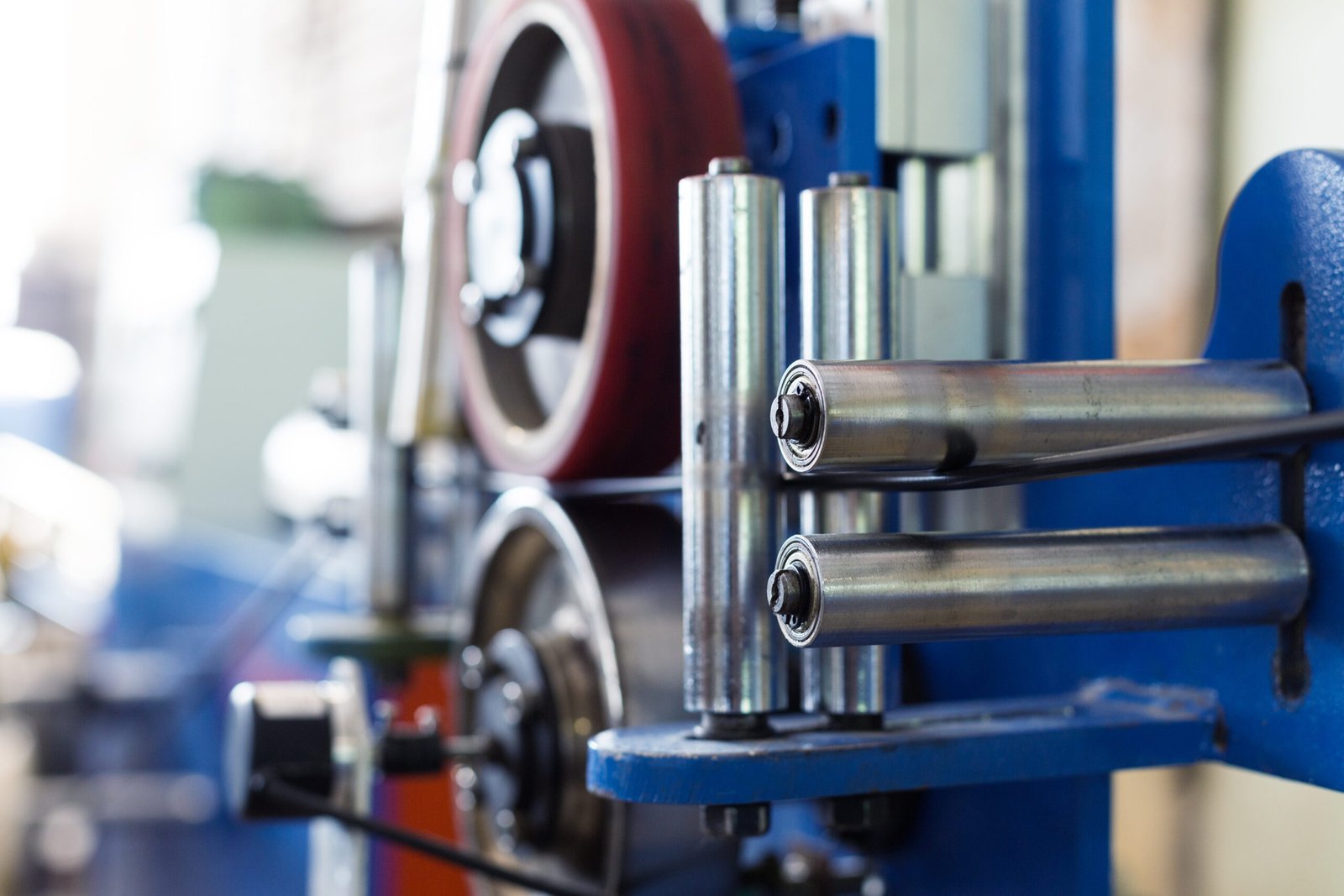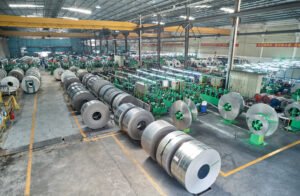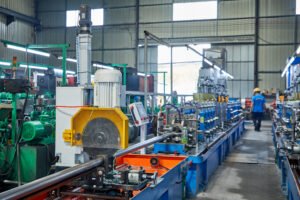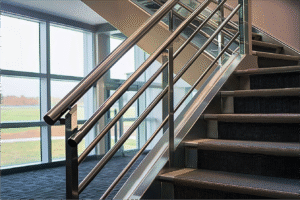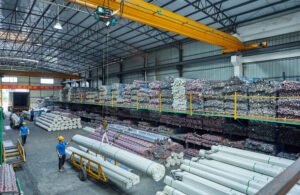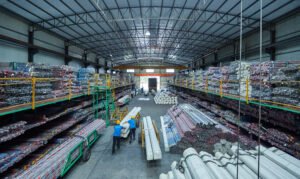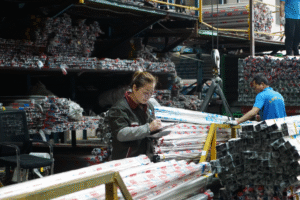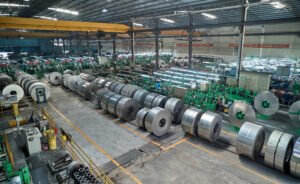304 vs 316 Stainless Steel Pipe: Key Differences
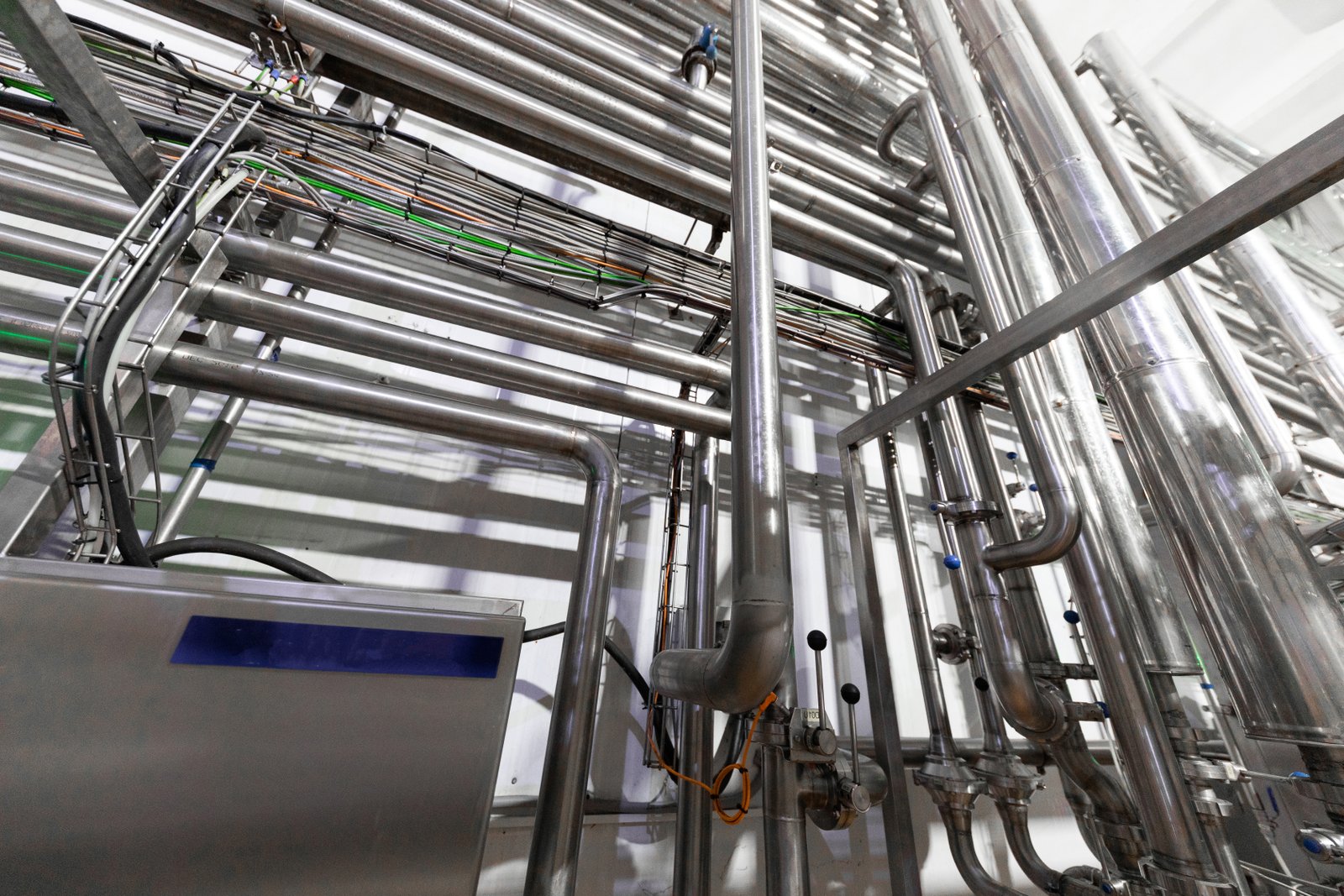
Are you struggling to decide between [304 and 316 stainless steel]https://mfysteel.com/304-vs-316-stainless-steel-differences/)[^1] for your piping project? Choosing the wrong grade can lead to premature failure, increased costs, and operational headaches. As Global Business Director at MFY, I've seen firsthand how this critical decision impacts project success across various industries.
304 and 316 stainless steel pipes differ primarily in their chemical composition, particularly the addition of molybdenum in 316, which significantly enhances its corrosion resistance, especially against chlorides. This makes 316 more suitable for harsher environments compared to the more general-purpose 304 stainless steel.
Understanding these differences is more than just an academic exercise; it's fundamental to ensuring the longevity and efficiency of your installations. Making an informed choice can save you significant resources in the long run, preventing costly replacements and downtime. At MFY, we often guide our clients through this selection process, ensuring they get the optimal material for their specific needs.
This decision often involves a delicate balance between cost, performance, and the specific environmental conditions the pipes will face. It’s not always a straightforward choice, as factors like initial investment versus long-term maintenance, and the precise nature of corrosive agents, must be carefully weighed. My experience across diverse markets, from India to the Middle East, has shown that what works for one application might be entirely unsuitable for another, even if they seem similar on the surface. We will delve deeper into these nuances.
What are the main differences between 304 and 316 stainless steel pipes?
Ever felt overwhelmed by the technical specifications when choosing stainless steel pipes? The subtle distinctions between grades like 304 and 316 can seem minor, but they lead to vastly different performance outcomes and project viabilities. Getting this wrong means potential system failures and budget overruns.
The main differences lie in their chemical composition, corrosion resistance, and cost. 316 contains molybdenum, offering superior resistance to chlorides and pitting corrosion, making it more robust in harsh environments than 304. Consequently, 316 is generally more expensive than 304 stainless steel.
Understanding these core differences is the first step towards making an informed decision for your project. It's not just about picking a "better" steel; it's about selecting the right steel for the job. At MFY, we often encounter clients, particularly engineering and construction contractors, who are weighing these options for critical infrastructure. For instance, a project in a coastal region of Southeast Asia will have vastly different atmospheric considerations than one in a dry, inland area. The presence of salt in the air or in process fluids dramatically shifts the suitability from 304 to 316. The addition of molybdenum (typically 2-3%) in 316 is the game-changer, providing that crucial defense against chloride-induced corrosion, such as pitting and crevice corrosion. While 304 offers excellent corrosion resistance in many atmospheric environments and against many organic and inorganic chemicals, its Achilles' heel is its susceptibility to chlorides. This isn't to say 304 is inferior; it's simply designed for different operational parameters. The cost implication is also a significant factor. Molybdenum is a relatively expensive alloying element, contributing to the higher price point of 316. Therefore, the decision often involves a careful cost-benefit analysis, balancing the initial material cost against the potential long-term costs of maintenance, repair, or premature replacement if an unsuitable grade is chosen.
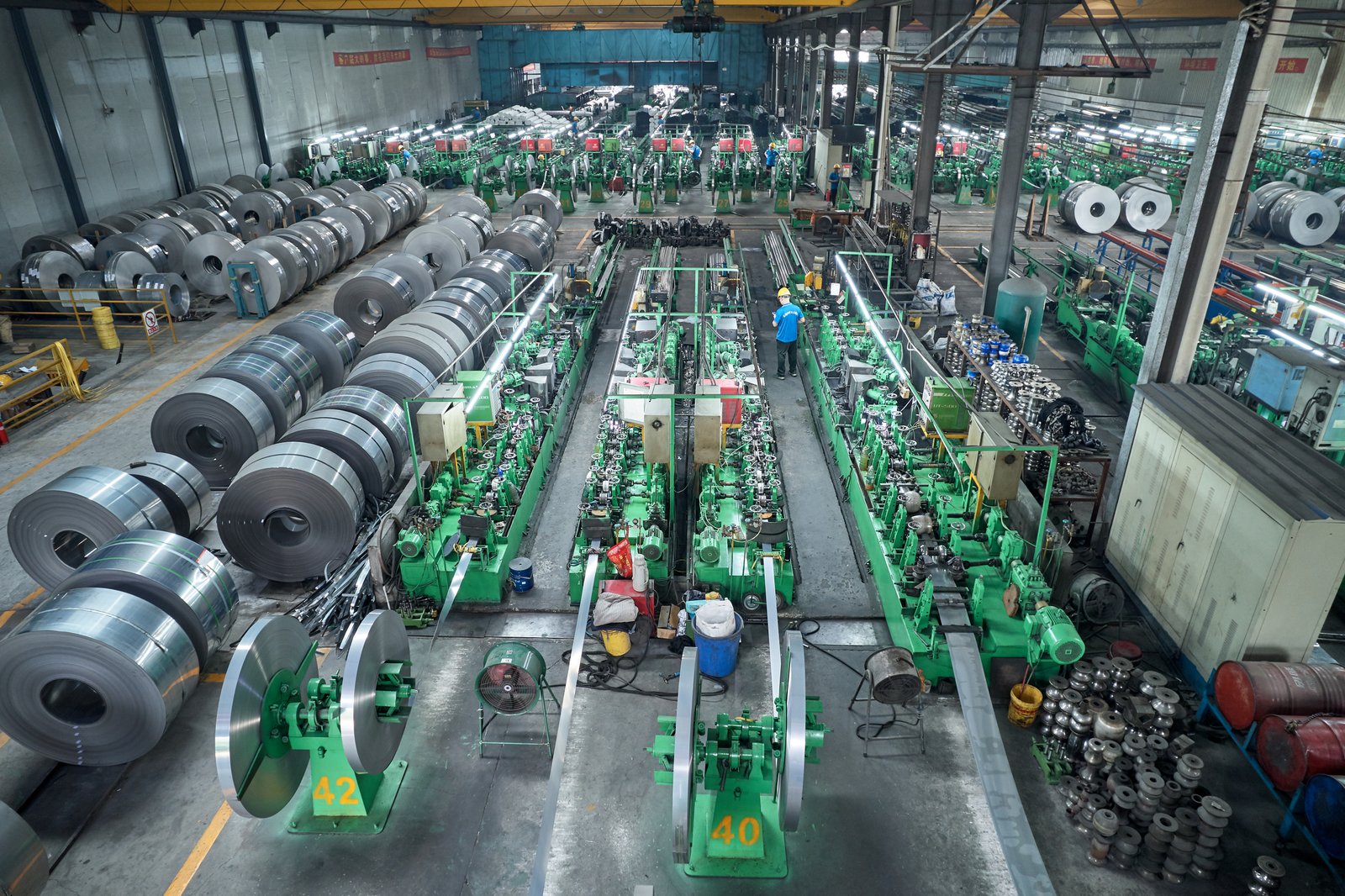
When we dissect the differences between 304 and 316 stainless steel pipes, we move beyond simple labels into the realm of material science and application-specific engineering. The distinctions, while seemingly subtle in compositional percentages, translate into vastly different performance characteristics, especially under duress. At MFY, we've guided countless clients, from manufacturing companies in India to equipment integrators in Russia, through this selection maze. The choice isn't merely academic; it has profound implications for durability, safety, and overall project lifecycle costs. A common scenario I recall involved a food processing client in Thailand who initially leaned towards 304 for cost savings on a new processing line. However, their cleaning regimen involved chloride-based sanitizers. We had to explain that while 304 is often used in food applications, their specific cleaning agents would likely lead to pitting corrosion over time, potentially contaminating products or causing leaks. Switching to 316, despite the higher upfront cost, was the more prudent long-term decision for safety and operational integrity. This highlights that a holistic view, considering all operational variables, is paramount.
Elemental Composition and Its Direct Impact
The primary differentiator, as mentioned, is molybdenum in 316 stainless steel, typically ranging from 2% to 3%. This element is key to 316's enhanced corrosion resistance, particularly against pitting and crevice corrosion in chloride environments. To illustrate, imagine microscopic shields on the steel's surface; molybdenum helps fortify these shields against chloride ions that try to break them down. Both 304 and 316 are austenitic stainless steels, meaning they share a common crystalline structure and are non-magnetic in their annealed condition. They both contain significant amounts of chromium (around 18% in 304, 16-18% in 316) and nickel (around 8-10.5% in 304, 10-14% in 316). Chromium is essential for forming the passive chromium oxide layer that gives stainless steel its "stainless" quality. Nickel enhances formability, weldability, and toughness, and also contributes to corrosion resistance in certain environments.
The slight variations in chromium and nickel content between 304 and 316, alongside the crucial molybdenum addition in 316, fine-tune their properties. For example, the higher nickel content often found in 316 can also contribute to improved general corrosion resistance and better performance in resisting stress corrosion cracking in some specific, albeit less common, environments compared to 304. However, the star player for chloride resistance remains molybdenum. Consider a client like an engineering contractor working on a coastal construction project in the Middle East. The salty air and potential for seawater spray necessitate a material that can withstand constant chloride exposure. Here, 316 is almost always the default choice over 304.
MFY's experience in supplying to diverse export markets has consistently shown that understanding these elemental differences is crucial for client satisfaction. We provide material test certificates (MTCs) with every shipment, detailing the exact chemical composition. This transparency allows clients to verify that they are receiving the grade specified and that it meets their project requirements. For instance, a slightly lower molybdenum content than specified in 316 (e.g., below 2%) could compromise its performance in a critical application, even if it's still marketed as "316." This is why stringent quality control, from raw material sourcing to final product inspection, is a cornerstone of our operations at MFY.
Corrosion Resistance Mechanisms Compared
Corrosion resistance is arguably the most critical performance difference. While 304 stainless steel offers good resistance to atmospheric corrosion and many oxidizing acids, it is vulnerable to chloride ions. These ions can cause localized corrosion, such as pitting (small holes) and crevice corrosion (corrosion in tight spaces or under deposits). Pitting can be particularly insidious as it can lead to perforation of the pipe wall without significant visible surface corrosion. This was a hard lesson for one of our distributor clients in India who had supplied 304 pipes for what was described as a "mild chemical processing" application. Unfortunately, trace amounts of chlorides in the process fluid, not initially disclosed, led to premature failures within a year.
316 stainless steel, with its molybdenum content, exhibits significantly enhanced resistance to these forms of localized corrosion. Molybdenum promotes the stability and repair of the passive protective film on the steel's surface, especially in the presence of chlorides. This makes 316 suitable for applications involving seawater, brine solutions, de-icing salts, and many chemical processing environments where chlorides are present. For example, in pharmaceutical manufacturing, where product purity is paramount and cleaning processes often involve aggressive chemicals, 316L (a low-carbon variant of 316) is frequently specified to prevent metallic contamination and ensure equipment longevity.
A comparative look at their Pitting Resistance Equivalent Number (PREN) illustrates this. PREN is calculated based on the content of chromium, molybdenum, and nitrogen. A typical PREN for 304 is around 18-20, while for 316 it's around 23-28. Higher PREN values indicate better pitting corrosion resistance. This quantitative measure helps engineers specify materials for given environments. For instance, a PREN above 32 is often recommended for seawater applications, which might lead to even higher alloyed stainless steels, but for many saline or mildly chloride-contaminated environments, 316 provides a good balance of performance and cost.
| Feature | 304 Stainless Steel | 316 Stainless Steel |
|---|---|---|
| Molybdenum (Mo) | ~0% | 2-3% |
| Chromium (Cr) | ~18% | ~16-18% |
| Nickel (Ni) | ~8-10.5% | ~10-14% |
| Chloride Resistance | Fair (vulnerable to pitting) | Excellent |
| Cost | Lower | Higher (approx. 20-30% more than 304) |
| Typical PREN | 18-20 | 23-28 |
| Common Applications | Kitchenware, general architectural, food processing (mild conditions) | Marine, chemical processing, pharmaceutical |
Cost Implications and Lifecycle Value
The presence of molybdenum and often a slightly higher nickel content makes 316 stainless steel inherently more expensive than 304. The price difference can fluctuate based on market prices for these alloying elements but generally, 316 can be 20-30% or even more expensive than 304 for the same pipe dimensions. This initial cost difference is a major factor for many projects, especially those with tight budgets. As a Global Business Director, I frequently discuss this aspect with clients. My advice is always to look beyond the initial procurement cost and consider the total lifecycle cost.
For example, selecting 304 for a mildly corrosive environment where it might last 10-15 years could seem economical initially. However, if 316 could offer a 25-30 year lifespan in the same environment with less maintenance, the higher upfront cost of 316 might be justified by reduced replacement costs, less downtime, and lower maintenance expenses over the project's lifetime. I remember a manufacturing company client that chose 304 for a cooling water system with slightly elevated chloride levels to save on initial capital expenditure. Within five years, they faced multiple leaks and had to undertake expensive repairs and eventually a full replacement with 316, far exceeding the initial savings.
The decision also impacts MFY's inventory strategy. We maintain substantial stocks of both 304 and 316 pipes to cater to diverse client needs and ensure rapid export delivery. However, the higher cost of 316 means that managing its inventory requires careful forecasting and capital allocation. Our fully integrated supply chain, from raw material trading to production, allows us to manage these costs more effectively and offer competitive pricing for both grades. Ultimately, the "cheaper" option is not always the most cost-effective one when long-term performance and reliability are factored in. This is a crucial conversation we have with our clients, helping them to make a decision that provides the best value.
316 has better chloride resistanceTrue
316 stainless steel contains molybdenum which significantly enhances its resistance to chloride-induced corrosion compared to 304.
304 is always the cheaper optionFalse
While 304 generally costs less initially, 316 may prove more cost-effective long-term due to its superior durability in harsh environments.
How do the compositions of 304 and 316 stainless steel affect their performance?
Are you puzzled about how tiny changes in metal alloys can drastically alter performance? The specific elements within 304 and 316 stainless steel are not just ingredients; they are architects of strength, resilience, and longevity. Misunderstanding this can lead to specifying a material that fails under pressure.
The composition directly dictates performance: 316's molybdenum (2-3%) vastly improves chloride corrosion and pitting resistance over 304. Both share chromium for basic corrosion protection and nickel for formability, but 316's additions make it superior in aggressive environments.
The elemental makeup of stainless steel is the very foundation of its characteristics. It's like a recipe where each ingredient plays a critical role in the final dish. At MFY, when we discuss material specifications with our clients, whether they are large manufacturing companies or specialized engineering contractors, we emphasize that the chemical composition is not just a list of elements but a blueprint for performance. For 304 stainless steel, the key elements are chromium (typically 18%) and nickel (typically 8%). This "18/8" combination is renowned for providing good general corrosion resistance, excellent formability, and weldability. It’s a workhorse in many industries. However, when we introduce molybdenum (usually 2-3%) along with slightly adjusted chromium and often higher nickel levels to create 316 stainless steel, we unlock a new level of performance, particularly concerning resistance to specific types of corrosion. This isn't just a marginal improvement; it can be the difference between a system that lasts for decades and one that fails prematurely in certain conditions. For example, a client involved in building desalination pre-treatment facilities in the Middle East would find 304 wholly inadequate due to the high chloride content of seawater, whereas 316 (or even higher-alloyed grades) becomes essential. The molybdenum actively works to stabilize the passive layer on the steel's surface, making it more robust against attack from chloride ions, which are notorious for causing pitting and crevice corrosion.
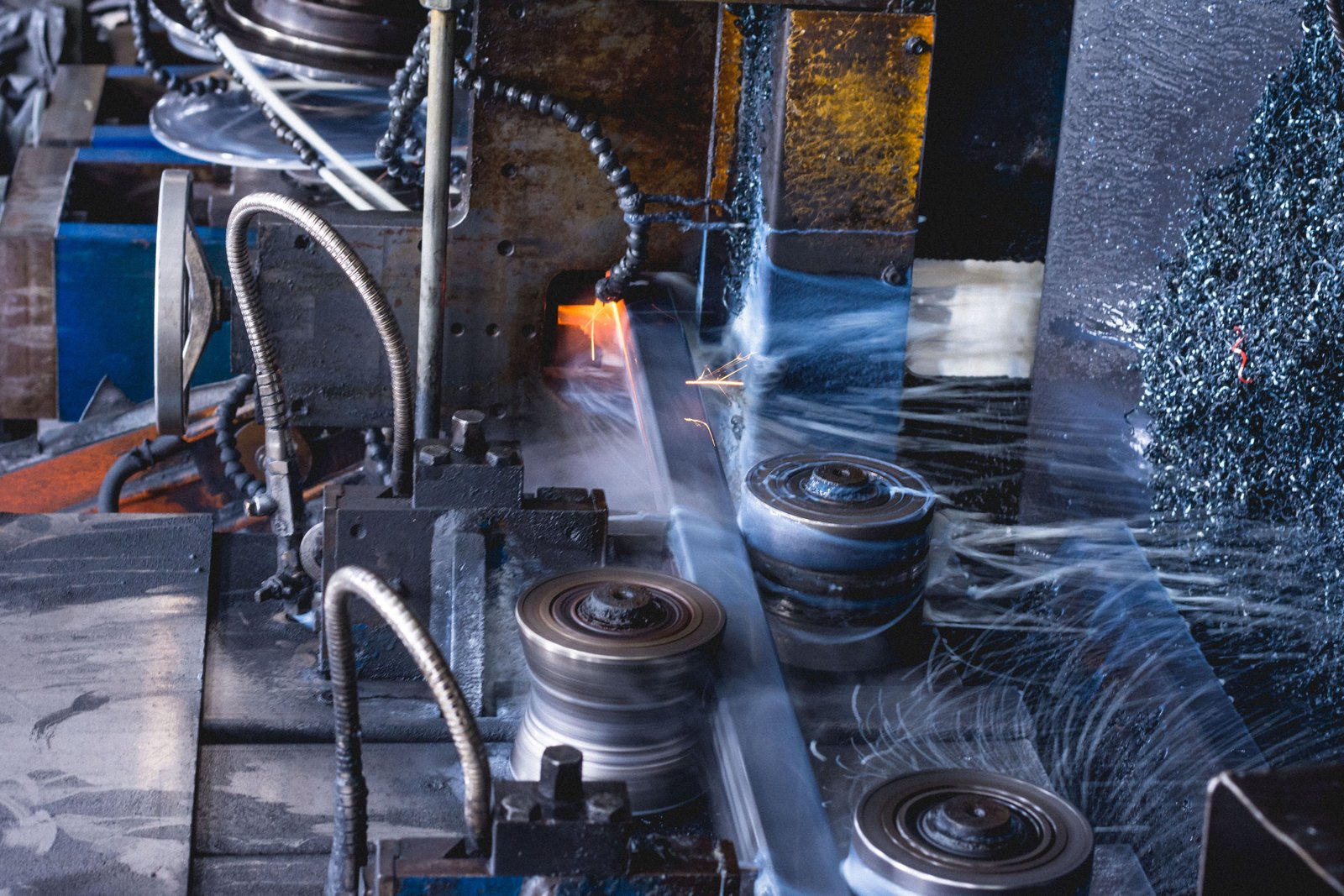
The performance of stainless steel pipes is inextricably linked to their precise chemical composition. Each alloying element contributes unique properties, and the synergy between them defines the steel's suitability for specific applications. As someone who has worked extensively in the stainless steel industry with MFY, I've seen how these compositional nuances translate into real-world performance differences, impacting everything from the longevity of industrial equipment to the safety of food and pharmaceutical products. When we talk about 304 versus 316, we are essentially discussing how the presence or absence of a few key percentage points of certain elements can redefine the material's capabilities, especially its ability to withstand corrosive attacks. This understanding is crucial for our clients, whether they are distributors in India trying to stock the right inventory or engineering contractors in Southeast Asia designing critical infrastructure. A story that comes to mind is when we assisted an equipment integrator who was developing a new line of machinery for the textile dyeing industry. The initial design used 304 stainless steel for pipework handling various dye solutions. However, some of these solutions contained acidic components and residual chlorides from bleaching agents. During prototype testing, they observed early signs of corrosion. Our team at MFY analyzed their process fluids and recommended a shift to 316L (the low-carbon version of 316, for better weldability and resistance to sensitization). This change, though increasing material cost slightly, prevented potential field failures and costly warranty claims for their machinery.
The Role of Chromium and Nickel (Common to Both)
Both 304 and 316 stainless steels belong to the austenitic family and share a foundational composition that includes chromium and nickel, which are vital for their "stainless" properties and overall mechanical behavior. Chromium is the most critical element for providing basic corrosion resistance. It typically ranges from 16% to 18% in 316 and around 18% to 20% in 304. When exposed to oxygen, chromium forms a very thin, tenacious, and self-repairing passive layer of chromium oxide (Cr₂O₃) on the surface of the steel. This passive layer is what protects the underlying iron from rusting and shields the steel from many corrosive environments. The integrity and stability of this layer are paramount.
Nickel, present at about 8-10.5% in 304 and 10-14% in 316, plays several important roles. Firstly, it is an austenite stabilizer, meaning it helps to maintain the face-centered cubic (FCC) crystal structure of austenite at room temperature and even down to cryogenic temperatures. This austenitic structure is responsible for stainless steel's excellent ductility, formability, and toughness, even at low temperatures. Nickel also enhances general corrosion resistance, particularly in reducing acid environments, and improves weldability. The higher nickel content in 316 contributes to its enhanced formability and can offer slightly better resistance to stress corrosion cracking in certain specific environments compared to 304, although molybdenum is the primary driver for its superior performance in chloride settings.
The synergy between chromium and nickel is fundamental. Chromium provides the primary passivation, while nickel enhances the steel's processability and broadens its range of corrosion resistance. At MFY, our production processes for stainless steel tubes ensure that these elements are precisely controlled within specified ranges. Our quality control, starting from the selection of raw stainless steel coils, focuses on verifying these compositions, as even minor deviations can impact the final product's performance, affecting everything from its corrosion resistance to its mechanical strength during fabrication by our clients, such as manufacturing companies.
Molybdenum: The Game Changer in 316
The defining difference in composition and, consequently, performance between 304 and 316 stainless steel is the intentional addition of molybdenum (Mo)1 to 316, typically in the range of 2-3%. Molybdenum is a powerful alloying element that significantly enhances resistance to localized corrosion, particularly pitting and crevice corrosion, especially in chloride-containing environments. This is why 316 is often referred to as "marine grade" stainless steel, although its applications extend far beyond marine settings to chemical processing, pharmaceuticals, and food industries where chloride exposure is a concern.
Molybdenum works by strengthening the passive chromium oxide layer. It is believed to promote the enrichment of chromium in the passive film and can form stable oxyhydroxides that inhibit the propagation of pits once they initiate. In essence, it helps the steel to "heal" itself more effectively when attacked by chlorides. This effect is quantifiable through measures like the Pitting Resistance Equivalent Number (PREN = %Cr + 3.3 %Mo + 16 %N). Given that 316 contains 2-3% Mo, its PREN is significantly higher than that of 304 (which has negligible Mo), directly reflecting its superior pitting resistance. For example, a typical 304 might have a PREN around 19, while a 316 will be around 25. This difference is critical.
I recall a situation with an engineering contractor in the Middle East specifying pipes for a coastal HVAC system. They were considering 304 due to budget constraints. We strongly advised against it, providing data on atmospheric salinity in the region and case studies of 304 failures. The 2-3% molybdenum in 316 was the crucial factor that would ensure the system's longevity. While it meant a higher initial investment, it saved them from much larger costs associated with premature failure, repairs, and system downtime in a critical infrastructure project. This ability to withstand chloride environments is why MFY ensures a robust supply of 316 pipes for clients in regions like the Middle East and coastal Southeast Asia.
Carbon Content and Its Implications (304/316 vs 304L/316L)
While not a primary differentiator between the base grades of 304 and 316 themselves, carbon content is an important compositional factor that leads to the "L" variants – 304L and 316L. Standard 304 and 316 grades can have a carbon content up to 0.08%, whereas the "L" grades have a maximum carbon content of 0.03%. This lower carbon content is critical for applications involving welding. During welding, stainless steels can experience a phenomenon called sensitization if the carbon content is too high. When heated to temperatures between approximately 450°C and 850°C (800°F to 1550°F), carbon can combine with chromium to form chromium carbides along the grain boundaries. This depletes chromium from the areas adjacent to the grain boundaries, reducing the effectiveness of the passive layer and making these areas susceptible to intergranular corrosion.
By reducing the carbon content to 0.03% or less in 304L and 316L, the risk of sensitization and subsequent intergranular corrosion is significantly minimized, even in as-welded conditions or after short exposures to the sensitizing temperature range. This makes "L" grades the preferred choice for many welded structures and piping systems, especially those with thicker sections or those that cannot be solution annealed after welding. For instance, many of our manufacturing clients who fabricate complex assemblies from stainless steel pipes almost exclusively opt for 304L or 316L to ensure the integrity of the welded joints.
At MFY, we stock and produce a significant volume of 304L and 316L pipes because a vast majority of our clients in manufacturing, engineering, and construction require materials suitable for welding without post-weld heat treatment. While the base corrosion resistance of 304 vs 304L (or 316 vs 316L) in non-sensitizing conditions is similar, the "L" grade offers an added layer of security for welded fabrications. This compositional control over carbon is another example of how precise alloying dictates performance and suitability for specific manufacturing processes and service conditions.
| Element | Role in 304/316 Stainless Steel | Impact on Performance |
|---|---|---|
| Chromium (Cr) | Forms passive Cr₂O₃ layer | Primary contributor to general corrosion resistance. |
| Nickel (Ni) | Austenite stabilizer, enhances formability & toughness | Improves ductility, weldability, and resistance to some acids. |
| Molybdenum (Mo) | Present in 316 (2-3%), absent in 304 | Drastically improves resistance to pitting and crevice corrosion in chlorides. |
| Carbon (C) | Can cause sensitization if >0.03% and welded (forms chromium carbides) | "L" grades (≤0.03% C) minimize sensitization, crucial for welded applications. |
| Manganese (Mn) | Deoxidizer, improves hot working properties | Minor effect on corrosion, primarily aids manufacturing. |
| Silicon (Si) | Deoxidizer, improves resistance to high-temp oxidation | Minor effect on aqueous corrosion, aids steelmaking. |
316 contains molybdenumTrue
316 stainless steel contains 2-3% molybdenum which significantly improves its chloride corrosion resistance compared to 304.
304 is better for marine useFalse
316 is the preferred grade for marine applications due to its superior resistance to chloride-induced pitting corrosion.
In what environments and applications is 304 stainless steel preferable?
Concerned about over-engineering and overspending on materials? Sometimes, a more robust solution isn't necessarily the best one. Choosing 304 stainless steel in the right context can be the most economical and effective decision, but when is it truly the superior choice over 316?
304 stainless steel is preferable in environments with mild corrosive conditions, such as general atmospheric exposure, freshwater systems, and food processing applications where aggressive chlorides are absent. It's ideal for kitchen equipment, architectural paneling, and structural components not exposed to saline conditions.
Selecting 304 stainless steel is a smart, cost-effective choice when the application environment doesn't demand the enhanced corrosion resistance offered by 316. As a versatile and widely available material, 304 provides an excellent balance of performance, fabricability, and affordability for a vast array of uses. At MFY, we supply a significant volume of 304 stainless steel pipes to clients who operate in such suitable conditions. For example, many manufacturing companies use 304 for internal process lines handling non-corrosive fluids, or for structural elements within controlled factory environments. Similarly, in the construction sector, 304 is frequently used for decorative architectural features, indoor railings, and kitchen or sanitary ware where exposure to harsh chemicals or saline conditions is minimal. The key is a thorough understanding of the service environment. If there's no significant chloride presence, no exposure to seawater or de-icing salts, and the chemical environment is relatively benign, then the additional cost of 316 (due to its molybdenum content) is often unnecessary. I've seen clients successfully use 304 for decades in applications like dairy processing equipment, brewery installations, and for conveying potable water, provided regular cleaning protocols don't involve harsh chloride-based sanitizers. It's about matching the material's capabilities to the actual demands of the application, thereby optimizing both performance and budget.
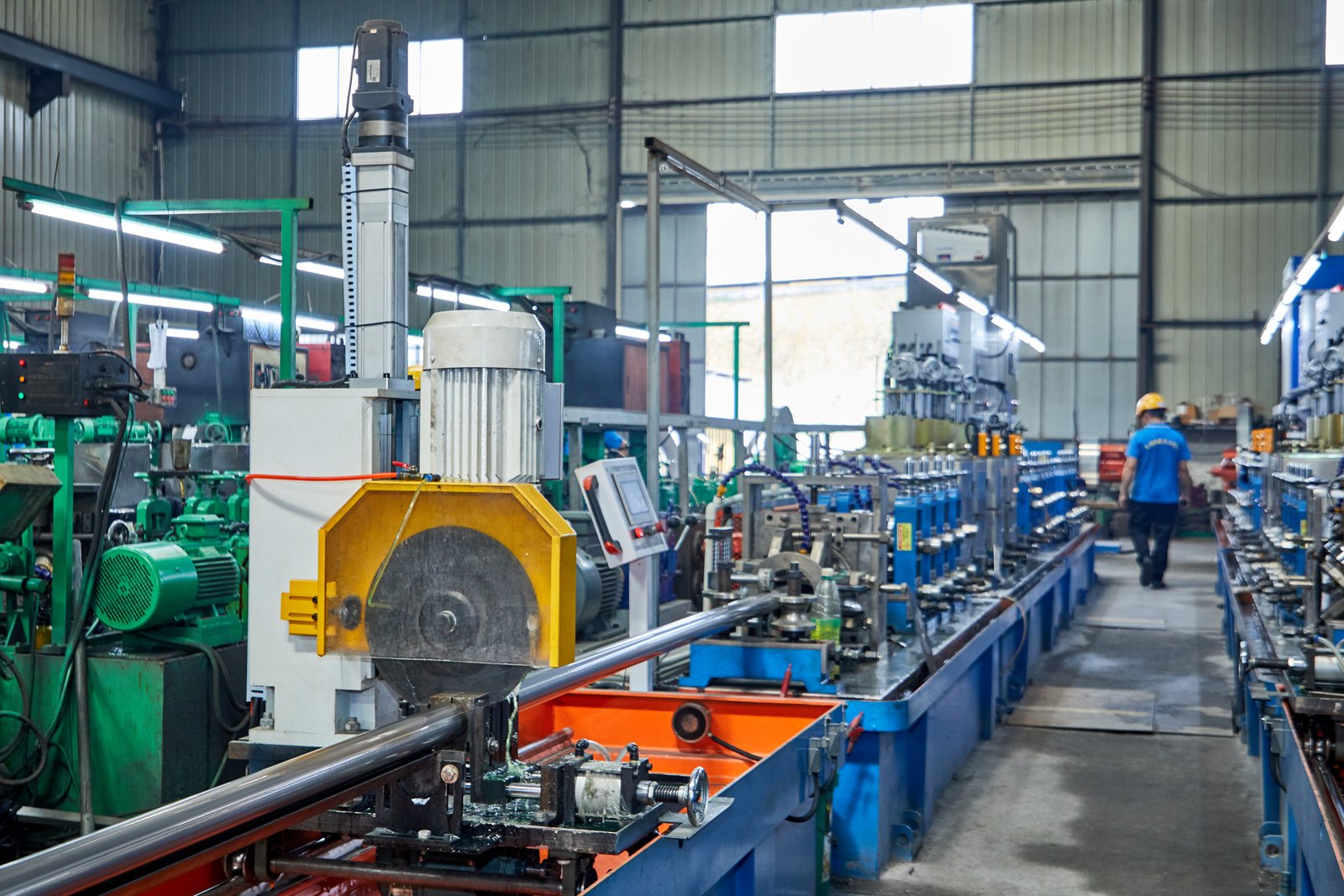
While the allure of 316's superior corrosion resistance is strong, 304 stainless steel remains an incredibly popular and effective material choice for a wide range of applications where its specific properties align perfectly with environmental demands and cost considerations. Its ubiquity in the market, driven by its excellent combination of corrosion resistance in many environments, good formability, weldability, and aesthetic appeal, makes it a go-to option for many industries. At MFY, a significant portion of our stainless steel pipe exports, particularly to diverse markets like India and Southeast Asia, consists of 304 grade, catering to clients in food processing, general manufacturing, and architectural sectors. The decision to opt for 304 often stems from a careful evaluation where the enhanced chloride resistance of 316 is deemed an over-specification, leading to unnecessary expenditure. I recall a client, a food and beverage manufacturer, who was setting up a new plant for processing fruit juices. They initially considered 316 for all piping due to a general perception of it being "better." However, after reviewing their process parameters—low chloride content in their products and cleaning solutions, and a controlled indoor environment—we demonstrated that high-quality 304 stainless steel pipes would meet their needs adequately, offering substantial cost savings on the project without compromising safety or product integrity. This practical approach is key to effective material selection.
General Atmospheric and Freshwater Applications
One of the primary domains where 304 stainless steel excels is in applications involving exposure to general atmospheric conditions and freshwater. In most urban and rural environments, away from direct coastal influences or heavy industrial pollution that might introduce specific corrosive agents, 304 performs admirably. Its chromium content2 forms a stable passive layer that protects against ordinary rusting and discoloration. This makes it ideal for architectural applications like exterior paneling (in non-marine locations), roofing, window frames, and outdoor furniture. Think of iconic structures that utilize stainless steel for its aesthetic appeal and durability; many of these in benign environments use 304 effectively.
Similarly, for freshwater systems, such as plumbing for potable water, storage tanks, and pipework in water treatment plants (upstream of chlorination or where chloride levels are low), 304 is a standard and reliable choice. Its resistance to corrosion by various types of water – hard, soft, treated – is generally good, provided the water does not have high concentrations of chlorides or other aggressive ions. Many municipal water systems and domestic plumbing installations have successfully used 304 for years. For instance, a distributor client of MFY in a landlocked region of India stocks large quantities of 304 pipes precisely for these general plumbing and light industrial water applications, where the cost-effectiveness of 304 provides a competitive advantage.
It's important to note, however, that "freshwater" can sometimes be misleading. Water sources can vary in their chemical makeup, and some groundwaters or industrial process waters might contain unexpected levels of chlorides or sulfates that could challenge 304. Therefore, a water analysis is often recommended if there's any doubt. However, for typical municipal water or well-controlled industrial water loops, 304 offers a long service life at a more accessible price point than 316.
Food Processing and Kitchen Equipment (Non-Chloride Environments)
The food and beverage industry is a major user of 304 stainless steel. Its hygienic properties, ease of cleaning, resistance to food acids (like citric acid, acetic acid), and inability to impart flavors to food products make it an excellent material for processing equipment, storage tanks, piping, and preparation surfaces. Walk into any commercial kitchen, and you'll be surrounded by 304 stainless steel – from countertops and sinks3 to cookware and appliance facings. This widespread use is a testament to its suitability and cost-effectiveness for these applications.
However, the caveat here is the "non-chloride environment." While 304 can handle most food products and typical cleaning detergents, it can be susceptible to corrosion if aggressive chloride-based sanitizers or brines are used frequently or allowed to remain in contact for extended periods. For example, in dairy processing, 304 is widely used for milk storage tanks and pasteurization equipment. But if cleaning involves strong hypochlorite solutions, then 316L might be a safer choice to prevent pitting. Many of MFY's manufacturing clients producing food processing machinery specify 304 for components that handle products like fruit juices, beer, or wine, where chloride content is inherently low.
The key is a well-defined operational and cleaning protocol. If a facility uses non-chloride-based cleaning agents and ensures thorough rinsing, 304 can provide excellent service. I remember working with a brewery equipment supplier who used MFY's 304 pipes extensively. Their cleaning-in-place (CIP) systems were carefully designed to use alkaline and acid detergents that were compatible with 304, ensuring both hygiene and equipment longevity without the added cost of 316. This practical application highlights 304's value when conditions are appropriately managed.
Structural and Architectural Uses (Controlled Environments)
Beyond direct fluid handling, 304 stainless steel is also favored for various structural and architectural components, particularly in controlled or mild environments. Its good mechanical strength, combined with its aesthetic appeal (various finishes like brushed, polished, or matte are possible) and formability, allows designers and engineers to create durable and visually pleasing structures. Examples include indoor railings, support columns, decorative trim, elevator panels, and certain types of fasteners and hardware.
In these applications, the primary concern is often aesthetic longevity – maintaining a clean, rust-free appearance – rather than resistance to aggressive chemical attack. 304 achieves this well in indoor settings or outdoor environments that are not subject to marine air or de-icing salts. For instance, an equipment integrator client might use 304 stainless steel tubing for the framework of machinery that will be housed within a factory, where atmospheric conditions are relatively stable and non-corrosive. The strength-to-weight ratio of stainless steel, combined with 304's relative affordability compared to more specialized alloys, makes it an attractive option.
MFY has supplied 304 pipes for numerous architectural projects where the design called for exposed stainless steel elements. A project for a commercial building's interior lobby, for example, utilized our polished 304 tubes for handrails and decorative features. In this context, the primary "environmental" challenges are occasional cleaning and human contact, conditions that 304 handles with ease. The choice of 304 here is driven by achieving the desired modern aesthetic and durability without the premium cost associated with 316, which would offer no additional functional benefit in such a controlled setting.
| Application Category | Specific Examples | Key Reasons for 304 Preference | MFY Client Example Context |
|---|---|---|---|
| General Atmospheric Exposure | Non-marine architectural panels, outdoor furniture | Good general corrosion resistance, aesthetic appeal, cost-effective | Supplying 304 for urban building facades (non-coastal) |
| Freshwater Systems | Potable water plumbing, freshwater tanks | Resistance to typical freshwater, cost | Distributor in India stocking 304 for local plumbing needs |
| Food Processing (Low Chloride) | Dairy (mild cleaning), brewery, fruit juice lines | Hygienic, resists food acids, ease of cleaning, cost | Manufacturer of brewery equipment using MFY's 304 pipes |
| Kitchen & Sanitary Ware | Sinks, countertops, commercial kitchen equipment | Hygienic, durable, aesthetic, cost-effective | Supplying 304 sheets/pipes for kitchen appliance manufacturers |
| Indoor Structural/Architectural | Railings, decorative trim, machinery frames (indoor) | Aesthetic appeal, good strength, formability, cost | Equipment integrator using 304 for machine frames |
304 is ideal for food processingTrue
304 stainless steel is widely used in food processing due to its hygienic properties and resistance to food acids, provided chloride-based cleaners are avoided.
316 is always better than 304False
316's superior corrosion resistance is unnecessary and cost-ineffective for applications without chloride exposure, where 304 performs perfectly.
When should you opt for 316 stainless steel pipes instead of 304?
Facing a challenging environment for your stainless steel pipes? Wondering if the standard 304 grade will hold up, or if you need something more robust? Opting for 316 is a critical decision when conditions turn aggressive, and failure is not an option.
You should opt for 316 stainless steel pipes when applications involve exposure to chlorides (e.g., seawater, de-icing salts), harsh chemicals, or require enhanced resistance to pitting and crevice corrosion. Marine environments, pharmaceutical manufacturing, and certain food processing applications often demand 316.
The decision to upgrade from 304 to 316 stainless steel pipes is typically driven by the presence of specific corrosive agents, most notably chlorides, or by the need for superior performance in demanding industrial processes. At MFY, we often advise clients that while 316 comes at a higher initial cost, this investment can prevent far greater expenses down the line related to corrosion failure, maintenance, and replacement in unsuitable environments for 304. For instance, any application involving direct contact with seawater or located in coastal areas with salt-laden air almost unequivocally calls for 316. I've seen too many instances where attempts to save money by using 304 in such settings have led to rapid deterioration and costly rectification work. Similarly, in the chemical processing industry, where a multitude of corrosive substances are handled, 316 offers a broader range of resistance. Pharmaceutical and biomedical applications also heavily favor 316 or 316L due to its enhanced cleanliness, corrosion resistance against aggressive cleaning agents, and reduced risk of metallic ion leaching, ensuring product purity and safety. It's about recognizing when the operational environment crosses a threshold where 304's capabilities are exceeded, making 316 the prudent and necessary choice for long-term reliability.
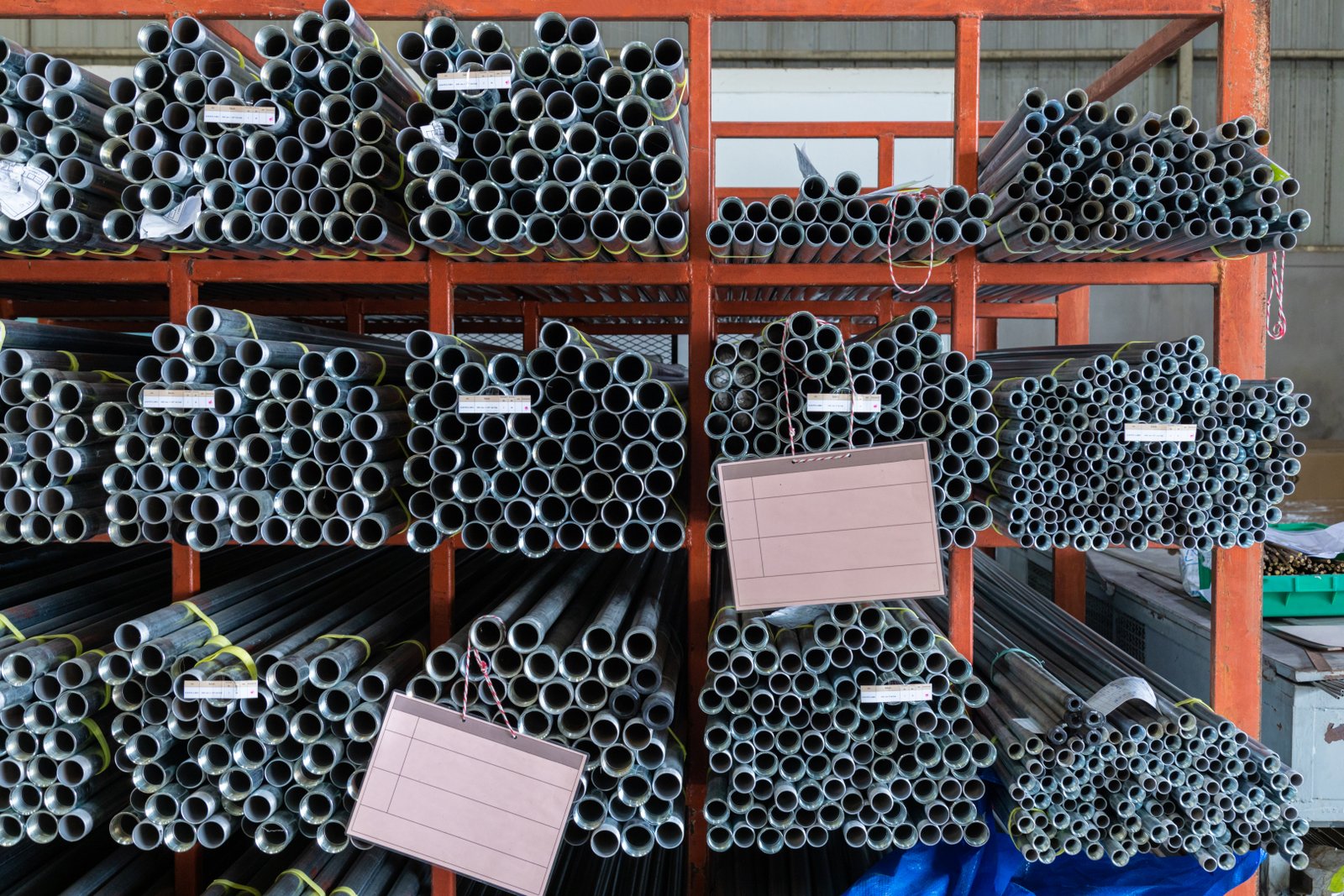
Choosing 316 stainless steel over its 304 counterpart is a strategic decision rooted in the need for enhanced durability and reliability in more aggressive environments. The inclusion of molybdenum (2-3%) in 316's alloy composition is the critical factor that elevates its performance, particularly its ability to combat chloride-induced corrosion like pitting and crevice corrosion. As Global Business Director for MFY, I've seen numerous projects across our export markets – from the humid, saline conditions of Southeast Asia to the demanding industrial plants in the Middle East – where 316 was not just a preference but a necessity. The upfront cost difference between 304 and 316 can be significant, often a primary concern for clients. However, when we analyze the total cost of ownership, including potential downtime, replacement labor, and loss of production due to premature failure of a less resistant material, the value proposition of 316 becomes clear in specific contexts. I recall a case with an engineering contractor working on a coastal wastewater treatment plant. They initially budgeted for 304 piping to reduce costs. After our team presented data on chloride levels in their specific coastal environment and case studies of 304 failures in similar applications4, they revised their specification to 316L. This foresight undoubtedly saved them from significant operational issues and replacement costs in the near future.
Marine and Coastal Environments
One of the most clear-cut scenarios demanding 316 stainless steel is exposure to marine or coastal environments. Seawater is rich in chloride ions (typically around 19,000 to 20,000 parts per million), which are highly aggressive towards 304 stainless steel, leading to rapid pitting and crevice corrosion. Any equipment or piping directly immersed in seawater, exposed to salt spray, or even located in close proximity to the coast where saline humidity is high, should utilize 316 or even higher-alloyed stainless steels. This includes shipbuilding, offshore oil and gas platforms, desalination plants, coastal architectural features, and seaside industrial facilities.
At MFY, we have supplied numerous clients in Southeast Asia and the Middle East with 316 and 316L pipes for exactly these types of applications. For example, heat exchanger tubing in systems using seawater as a coolant, piping for ballast water systems on ships, or structural supports on piers and docks all benefit from 316's enhanced chloride resistance. The molybdenum in 316 helps to stabilize the passive film against chloride attack, significantly extending the service life of components in these harsh conditions. Using 304 in such environments is almost guaranteed to result in premature failure, often within a very short timeframe. The cost of repair or replacement, especially for critical infrastructure or offshore installations, would dwarf the initial savings from choosing 304.
Consider a practical example: handrails on a beachfront promenade. If made from 304, they might start showing signs of rust and pitting within months. If made from 316, they can maintain their integrity and appearance for many years, justifying the higher material cost through longevity and reduced maintenance. This is why "marine grade" is a common moniker for 316 stainless steel.
Chemical Processing and Pharmaceutical Industries
The chemical processing industry (CPI) and pharmaceutical manufacturing are other major sectors where 316 stainless steel pipes are frequently specified. In CPI, pipes often convey a wide variety of chemicals, including acids, alkalis, solvents, and solutions containing chlorides or other halides. While 304 can handle some mild chemicals, 316 offers a broader range of corrosion resistance, making it suitable for more aggressive chemical environments. For example, 316 is more resistant to sulfuric acid, phosphoric acid, acetic acid, and formic acid, especially at elevated temperatures or concentrations where 304 might corrode. Its resistance to chloride-containing process streams is also a critical advantage.
In the pharmaceutical industry, the requirements are even more stringent. Product purity is paramount, and any contamination from the processing equipment is unacceptable. 316L (low carbon version) is widely used due to its excellent corrosion resistance, which minimizes the leaching of metallic ions into the product. Furthermore, pharmaceutical processes often involve rigorous cleaning and sterilization cycles, frequently using aggressive chemicals like chlorinated cleaners or steam. 316L withstands these conditions better than 304, ensuring both equipment longevity and product integrity. The smooth, crevice-free surfaces achievable with 316L also make it easier to clean and sterilize, preventing microbial growth.
MFY works with equipment integrators who build systems for these industries. We ensure our 316L pipes meet stringent quality standards, including surface finish requirements (e.g., electropolishing for ultra-high purity applications) and full material traceability. A client manufacturing reactors for pharmaceutical synthesis, for instance, would exclusively use 316L for all wetted parts to comply with industry regulations like FDA guidelines or Good Manufacturing Practices (GMP).
Food Processing with High Chlorides or Aggressive Cleaning
While 304 is suitable for many food processing applications, there are specific scenarios where 316 becomes necessary. This is typically when the food product itself has a high salt (sodium chloride) content, or when the cleaning and sanitization protocols involve harsh, chloride-based chemicals. Examples include processing brines (e.g., for pickles or olives), tomato-based products (which can be acidic and sometimes contain salt), and facilities that rely heavily on hypochlorite sanitizers.
In these cases, the molybdenum in 316 provides the necessary protection against pitting and crevice corrosion that could otherwise occur with 304. Corrosion in food processing equipment is not just an equipment longevity issue; it can also lead to product contamination and food safety concerns. Therefore, if there's any doubt about the corrosivity of the product or the cleaning agents, opting for 316 or 316L is a safer and often more economical long-term choice.
I recall a discussion with a manufacturer of snack foods that used significant amounts of salt in their recipes and also employed chloride-based cleaners. They had experienced issues with 304 components showing corrosion. MFY recommended a switch to 316 for the affected parts of their processing lines. This switch resolved their corrosion problems and ensured compliance with food safety standards. The decision to use 316 in such food applications is a careful balance: if chlorides are definitively absent or very low, 304 is fine; if they are present or if aggressive cleaning is routine, 316 is the more prudent path.
| Environment/Application | Key Corrosive Agent(s) / Condition | Why 316 is Preferred | Typical MFY Client Profile |
|---|---|---|---|
| Marine & Coastal | Seawater (high chlorides), salt spray | Superior resistance to pitting/crevice corrosion | Shipbuilding, offshore platforms, coastal construction (ME, SEA) |
| Chemical Processing | Various acids, chlorides, halides | Broader chemical resistance, handles more aggressive media | Manufacturers of chemical reactors, industrial plant contractors |
| Pharmaceutical Manufacturing | Aggressive cleaning agents, product purity needs | High corrosion resistance, minimizes ion leaching, hygienic | Pharmaceutical equipment integrators, biotech companies |
| Food Processing (High Chloride) | Brines, salty products, chloride cleaners | Prevents pitting from chlorides, ensures food safety | Processors of cured meats, pickles, users of hypochlorite |
| Pulp and Paper Industry | Bleaching chemicals (chlorine compounds) | Resistance to specific corrosive process chemicals | Paper mills, equipment suppliers to pulp industry |
| Wastewater Treatment | Variable chemical composition, chlorides | Handles diverse and often aggressive effluent streams | Municipal and industrial wastewater plant contractors |
316 resists chloride corrosion better than 304True
The molybdenum in 316 stainless steel significantly improves its resistance to pitting and crevice corrosion caused by chlorides.
304 is suitable for seawater applicationsFalse
304 stainless steel rapidly deteriorates in seawater due to high chloride content, making 316 the necessary choice for marine environments.
What are the best practices for selecting between 304 and 316 stainless steel pipes?
Feeling uncertain about making the final call between 304 and 316 stainless steel? A systematic approach can demystify this choice. Adopting best practices ensures you select the optimal material, balancing performance, cost, and longevity for your specific project needs, avoiding expensive mistakes.
Best practices include thoroughly analyzing the service environment (temperature, chemicals, chloride levels), considering lifecycle costs over initial price, consulting material specifications and expert advice, and evaluating fabrication requirements. If in doubt, especially with chlorides, lean towards 316 stainless steel.
Navigating the choice between 304 and 316 stainless steel pipes requires more than just a cursory glance at their properties; it demands a methodical and informed approach. As someone who guides clients through this process daily at MFY, I emphasize that the "best" choice is always context-dependent. There's no universal answer, but there are established best practices that can lead to an optimal decision. The first and most critical step is a comprehensive analysis of the service environment. This means identifying all potential corrosive agents the pipes will encounter, their concentrations, the operating temperature, and pressure. Special attention must be paid to the presence of chlorides, as this is often the deciding factor between 304 and 316. For example, a manufacturing company planning a new cooling system needs to know the chloride content of their water source. If it's above a certain threshold (often cited around 50-100 ppm for 304, though this can vary with temperature and other factors), then 316 becomes a much safer bet. Beyond just the chemical environment, physical parameters like abrasion or erosion potential should also be considered, though both 304 and 316 offer good resistance in this regard. This holistic environmental assessment forms the bedrock of a sound material selection strategy.
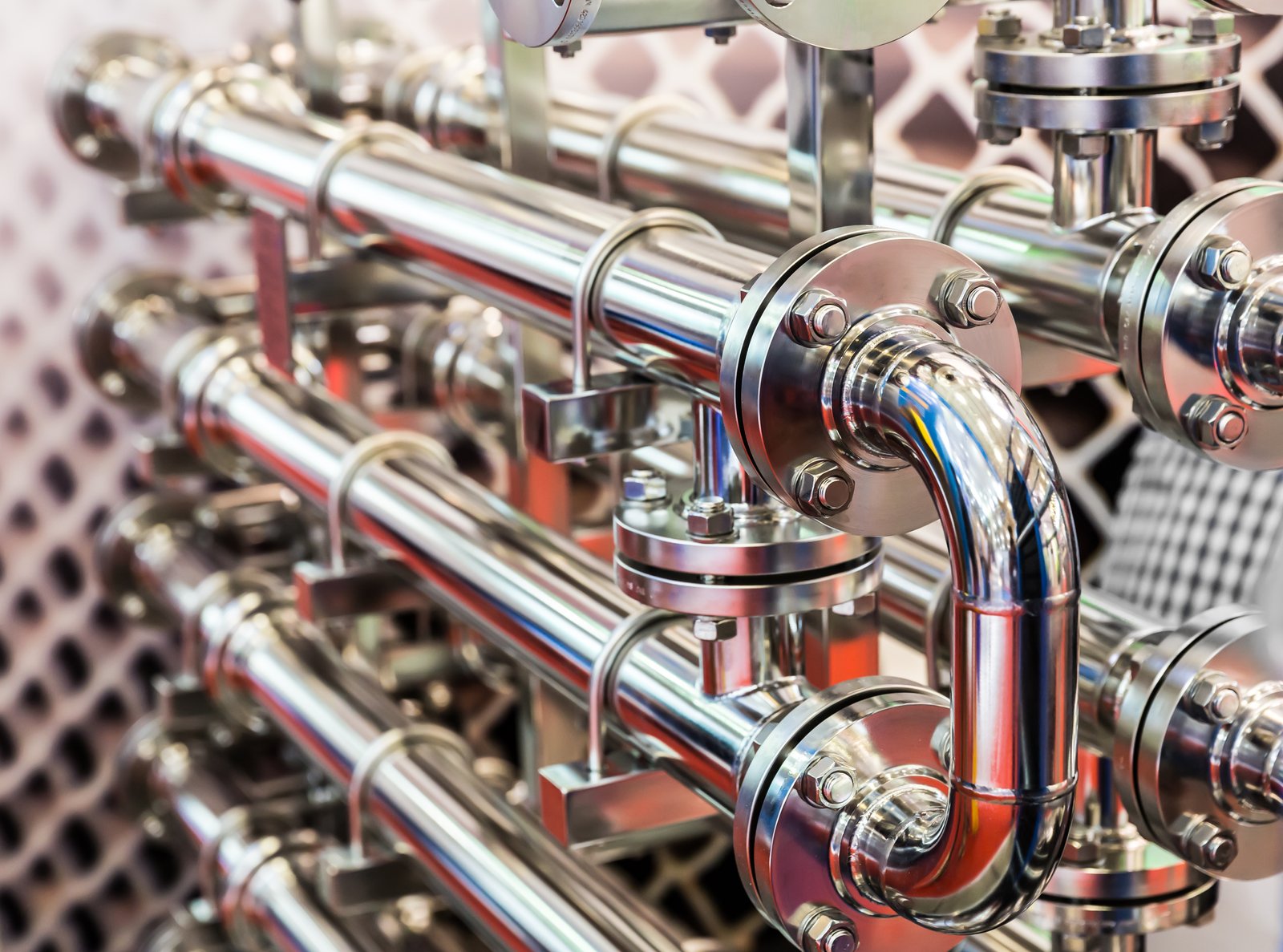
Selecting the right grade of stainless steel pipe, specifically between the workhorse 304 and the more resistant 316, is a critical decision that can significantly impact a project's success, safety, and long-term cost-effectiveness. It's a question I address frequently with MFY's diverse clientele, from distributors in India needing to advise their local customers, to large engineering and construction contractors in the Middle East designing complex industrial plants. Relying solely on general assumptions or initial cost can lead to premature failures or unnecessary overspending. Instead, a structured approach based on established best practices is essential. This involves not just understanding the materials themselves, but deeply understanding the application and its operational context. I once worked with an equipment integrator who was standardizing on 304 for most components to simplify their inventory and reduce costs. However, one of their machines was occasionally used in applications involving mildly saline solutions. While infrequent, these exposures led to isolated corrosion issues and customer complaints. Adopting a more nuanced selection process, reserving 316 for those specific components, resolved the problem and improved their product's reputation, illustrating the importance of matching material to precise, even if intermittent, conditions.
Thorough Environmental and Application Analysis
The cornerstone of any material selection process is a meticulous analysis of the service environment and the specific demands of the application. This goes beyond just identifying the primary fluid being conveyed. You must consider:
- Chemical Composition: What are all the chemicals the stainless steel will be exposed to, including trace elements or contaminants? Are chlorides, sulfides, or specific acids present? At what concentrations? For example, tap water in one region might be benign for 304, while in another, it might have higher chloride levels making 316 preferable. MFY often requests detailed process information from clients to assist in this.
- Temperature: Operating temperature significantly influences corrosion rates. A chemical that is mildly corrosive at room temperature might become highly aggressive at elevated temperatures. Both 304 and 316 have good high-temperature strength, but their corrosion resistance can be affected differently.
- Pressure and Flow Rates: While generally not a deciding factor between 304 and 316 for corrosion (as their mechanical properties are similar), high flow rates can exacerbate erosion-corrosion if any particulate matter is present.
- Exposure Type: Is the exposure continuous or intermittent? Is there a risk of stagnant conditions where crevice corrosion might initiate? For example, intermittent exposure to a mildly corrosive substance with thorough rinsing might allow for 304, whereas continuous exposure or trapped solutions would necessitate 316.
- Cleaning and Maintenance Regimens: What chemicals will be used for cleaning and sanitization? As discussed, chloride-based cleaners can be detrimental to 304, even if the process fluid itself is benign. A client using aggressive sanitizers in a food plant might need 316 even for low-chloride food products.
I always advise clients to document these conditions rigorously. If precise data isn't available (e.g., exact chloride levels in process water), it's often prudent to either conduct tests or err on the side of caution by selecting the more resistant grade, especially if the consequences of failure are severe.
Evaluating Total Lifecycle Cost (TLC) vs. Initial Cost
While 316 stainless steel typically has a higher initial purchase price than 304 (often 20-30% more, sometimes higher depending on market conditions for molybdenum and nickel), focusing solely on this upfront cost can be a shortsighted approach. Best practice dictates evaluating the Total Lifecycle Cost (TLC), which includes:
- Initial Material and Installation Cost: This is the most visible cost.
- Maintenance Costs: How frequently will inspections, cleaning, or minor repairs be needed? A more resistant material might require less maintenance.
- Repair and Replacement Costs: If the material fails prematurely, what are the costs of replacement, including new material, labor, and associated dismantling/reinstallation?
- Downtime Costs: What is the cost of lost production or service interruption if the piping system fails? For critical industrial processes or public infrastructure, downtime can be extremely expensive.
- Expected Service Life: A slightly more expensive material that lasts significantly longer can offer better value over time.
For instance, a manufacturing company might save $10,000 on initial piping costs by choosing 304 over 316 for a moderately corrosive application. However, if that 304 pipe fails after 5 years, requiring $20,000 to replace, while a 316 pipe would have lasted 15-20 years, the initial saving is quickly negated. MFY often helps clients perform this kind of analysis. We might present case studies where short-term savings led to long-term losses. This helps shift the perspective from "cost" to "investment." An engineering contractor working on a public utility project, for example, must prioritize longevity and reliability, making TLC a far more important metric than just the initial bid price for materials.
Consulting Standards, Experts, and Performing Tests
When uncertainty exists, or for critical applications, consulting relevant industry standards, material experts, and, if necessary, performing corrosion testing are essential best practices.
- Industry Standards: Many industries (e.g., ASME, ASTM, API, ISO, NACE) publish standards and guidelines for material selection in specific applications or environments. These standards often provide recommendations based on extensive research and field experience. For example, NACE MR0175/ISO 15156 provides guidance for materials in oil and gas production environments containing H₂S.
- Expert Consultation: This is where companies like MFY, with deep material knowledge and broad industry experience, can provide invaluable assistance. As Global Business Director, I ensure our technical sales team is well-equipped to discuss application details with clients and recommend appropriate grades. Sometimes, this involves discussions with metallurgists or corrosion engineers. Don't hesitate to leverage the expertise of your suppliers.
- Corrosion Testing: In novel applications or when environmental conditions are not well-defined, conducting corrosion tests with coupons of 304 and 316 (and potentially other alloys) exposed to the actual service environment can provide definitive data on their relative performance. This might involve laboratory tests simulating the conditions or field tests with an actual process stream. While this adds time and some cost to the selection process, it can prevent very costly mistakes. A client developing a new chemical process with unique byproducts might find this step crucial.
Finally, always consider fabrication aspects. Both 304 and 316 are readily weldable and formable, but the "L" grades (304L, 316L) are preferred for welded structures to avoid sensitization. Ensure that the chosen grade is compatible with the intended fabrication methods and that welders are qualified for the specific material. MFY ensures our pipes meet weldability standards and provides supporting documentation like Mill Test Certificates (MTCs) that confirm composition and properties, which is crucial for quality assurance in fabrication.
| Best Practice Aspect | Description | Key Considerations for 304 vs 316 Choice | Example Scenario |
|---|---|---|---|
| Environmental Analysis | Detailed study of chemical, thermal, and physical operating conditions. | Chloride concentration5, temperature, pH, presence of other specific corrosives. | Analyzing process water for chloride levels before selecting pipe for a cooling system. |
| Lifecycle Costing (TLC) | Evaluating total cost over the system's lifespan, not just initial price. | Higher upfront cost of 316 vs. potential for earlier failure/replacement of 304 in borderline conditions. | Calculating if 316's longevity in a mildly corrosive environment offsets its higher price. |
| Consulting Standards/Experts | Referring to industry codes, material specialists, or experienced suppliers. | Getting advice on suitability for specific regulated industries (e.g., pharma, food) or unique environments. | MFY advising a client on material for a new type of chemical reactor. |
| Corrosion Testing (If Needed) | Exposing material samples to actual or simulated service conditions. | When environmental data is unclear or the application is novel/critical. | A research facility testing 304 and 316 coupons in a new biotech process fluid. |
| Fabrication Considerations | Assessing weldability, formability, and post-fabrication treatment needs. | Choosing "L" grades (304L/316L) for welded applications to prevent sensitization. | Specifying 316L for a complex welded piping manifold to ensure joint integrity. |
| "When in Doubt" Principle | If significant uncertainty remains, especially with chlorides, choose safer. | If failure consequences are high and conditions borderline, the added cost of 316 is often good insurance. | Opting for 316 for underground pipes where inspection is difficult and chlorides possible. |
316 resists chlorides better than 304True
316 stainless steel contains molybdenum which significantly improves its resistance to chloride-induced corrosion compared to 304.
304 is always cheaper than 316False
While 304 is typically less expensive initially, 316 may prove more cost-effective over time due to its longer lifespan in corrosive environments.
Conclusion
Choosing between 304 and 316 stainless steel pipes hinges on environment and chloride presence. 304 suits general use; 316 excels in corrosive, marine, or chloride-rich settings. At MFY, we help you make the right, cost-effective choice for long-term performance.
-
Understand molybdenum's impact on pitting and crevice corrosion. ↩
-
Learn how chromium enhances corrosion resistance in stainless steels ↩
-
Understand the benefits of 304 stainless steel in kitchen environments ↩
-
Avoid common pitfalls associated with using 304 stainless steel in chloride-rich settings. ↩
-
Understand the impact of chlorides on stainless steel's durability ↩
Have Questions or Need More Information?
Get in touch with us for personalized assistance and expert advice.
